In half a year, the baby has time to give complementary foods. Mom should learn what "adult" products and exactly how to feed the crumbs.
Contents of
- How to introduce a child's feeding in 6 months with breastfeeding, where to start?
- VIDEO: Super-food for kids. Where to start feeding
- How to introduce a child's feeding in 6 months with artificial feeding, where to start?
- VIDEO: 5 complementary feeding errors
- Feeding porridges in 6 months
- Feeding menu for 6 months with breastfeeding: table
- Feeding menu at 6 months with artificial feeding: table
- VIDEO: Lure - School of Doctor Komarovsky
The only acceptable and most useful foodfor a little man, only appeared on the light, is the mother's milk. In extreme cases - an adapted mixture.
But there comes a time when the baby needs "adult" food - new foods in his diet. Despite the fact that every child is individual, pediatricians and children's nutritionists still recommend taking into account the peculiarities of the baby's organism, starting to feed the baby only when he turns 6 months old.
How to introduce a child's feeding in 6 months with breastfeeding, where to start?
By the half-year the small organism is already being reconstructed for eating new food. In it already:
- a number of digestive enzymes are formed, capable of taking other food, except for milk
- the sufficient level of local immunity is being strengthened
the need for other proteins, vitamins and minerals
( the first tooth can appear) - gradually changes the swallowing reflex -the kid gradually learns to swallow food from a spoon and so on
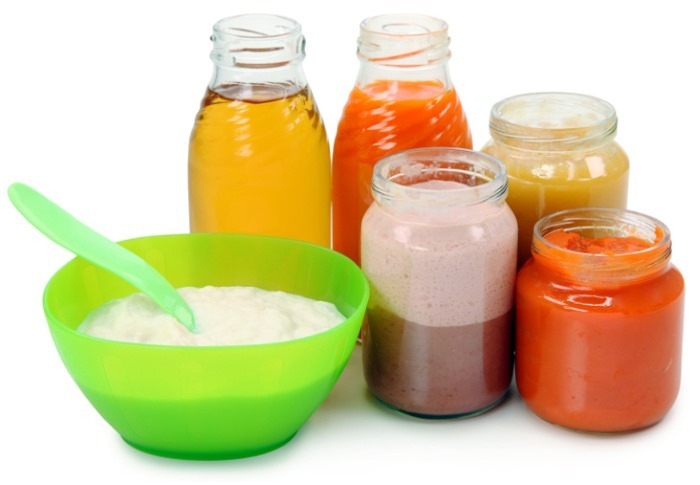 In half a year the body of crumbs is ready for lure.
In half a year the body of crumbs is ready for lure. So, according to modern medical recommendations, at 6 months old baby is ready to get "adult" food, but in the adapted form for it - homogeneous.
IMPORTANT: It must be said that some mothers successfully begin to feed a 4-month-old baby. This is all normal and acceptable, taking into account the individual characteristics of the baby and the features of his previous feeding
Lure begins with:
- vegetables brought to a puree state
- porridge
- juices
If possible, it is better to buy a child special baby food that is perfectly balanced and designed for consumption by childrendifferent ages - 6 months, 9 months and so on.
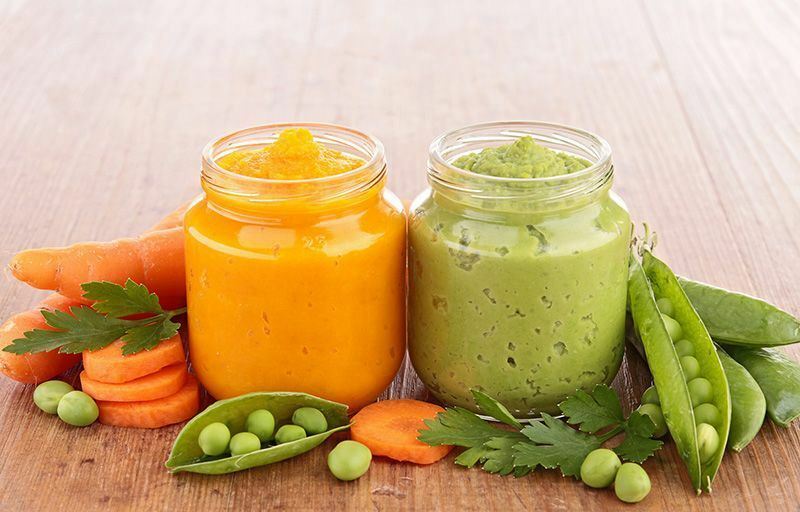 Vegetable puree - an ideal dish for the first complementary food.
Vegetable puree - an ideal dish for the first complementary food. - In the factory food for babies all requirements are met - it is perfectly shredded, prepared so that all useful substances of the products are kept as much as possible, and some are even specially added, it is tested and microbiologically safe.
- Beginning to introduce a variety in the ration of breastmilts is necessary from a one-component baby food,later you can add two-component puree and porridge
- A child who is breastfed receives all the necessary nutritional elements - proteins, vitamins, microelementss from the mother's milk
- It also plays the role of psychological factors - applying to the mother's breast, the child feels calm and protection. Also, mother's milk contributes to the formation of the protective forces of the child's body.
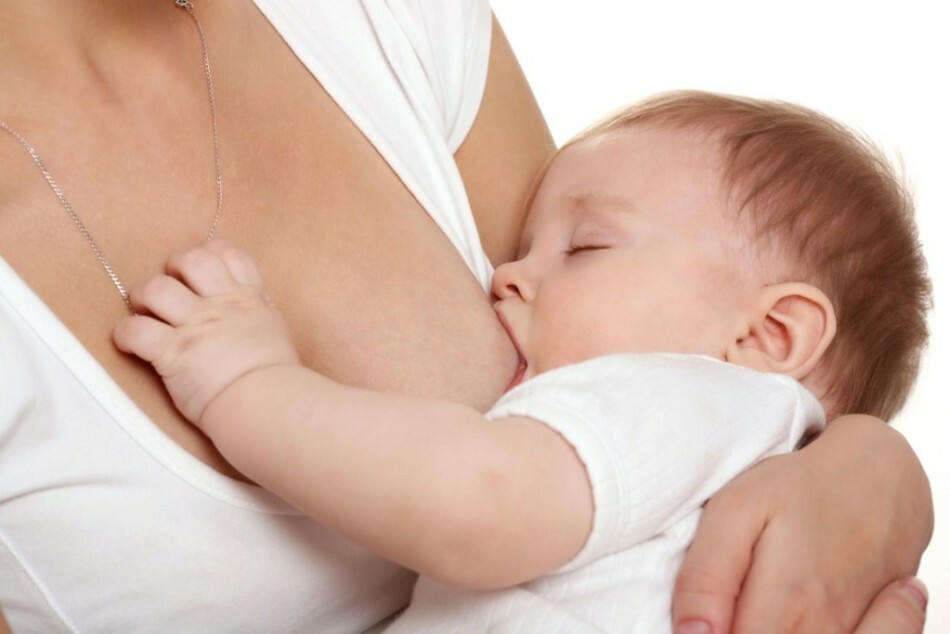 Introduction of complementary foods is not a reason to abolish breastfeeding.
Introduction of complementary foods is not a reason to abolish breastfeeding. IMPORTANT: When starting a lure, you do not need to give up breastfeeding, because from a mother's milk the baby receives about 70% of energy and most of the nutrients. Lure is not a substitute, but an addition to mother's milk.
- If the baby initially refuses any complementary foods, whatever they are, and continues to eat only mother's milk, you do not have to deny him, however, you need to be persistent with
- . For example, today the child categorically refused to accept new food, do not rape him, tryfeed it again a couple of days
- New food should be offered to the child in the middle of the day, but not before going to bed
- After serving a new treat, if the child is worried, you can feed him with mother's milk or a mixture of
- Start prikOrm follows from small doses - from a third or half a teaspoon per day. The supplementary dose gradually increases until it reaches the daily norm of a specific product - 150 - 180g
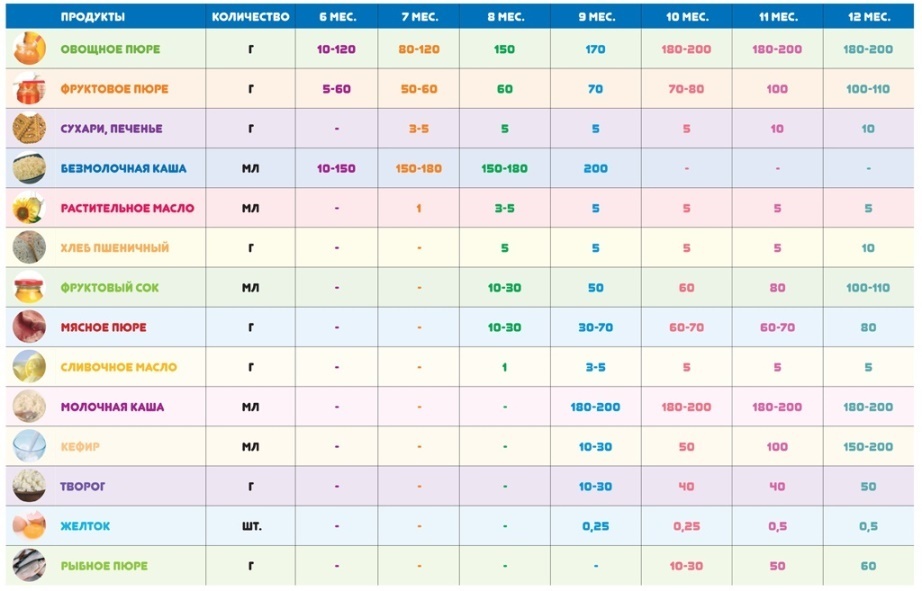 WHO supplementary feeding scheme.
WHO supplementary feeding scheme. WHO recommends that the first to introduce into the "adult" ration of baby vegetables, which grow in the latitudes where he lives. The reaction to exotics is very stormy, so it is better to start feeding it:
- with squash sausages
- cauliflower
- with carrots
- with pumpkin
- with potatoes
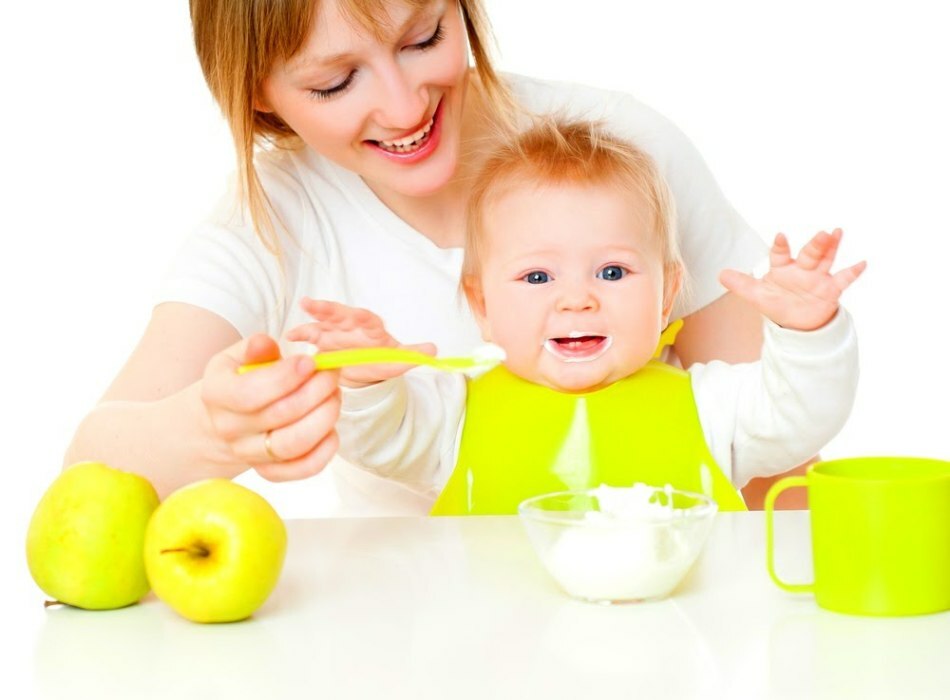 There should be no rush when introducing complementary foods.
There should be no rush when introducing complementary foods. Mom can do something like this:
- give the baby a half teaspoon of homogenized zucchini and wait for the reaction to it
- for a week - two gradually increase the portion and bring it to the normal( by age)
- give the child a cauliflower,wait for
reaction when the baby reacts normally to puree from both mono products, you can combine vegetables in one dish
IMPORTANT: If the baby's organism reacted to a new product somehow wrong -about there was a liquid stool, a rash, etc., the lure from this product should be postponed for at least two weeks. After you can try to give it again. In case of a second negative reaction to the product, the pediatrician
- should be consulted. After homogenized vegetables, the cereal turns. Although, doctors are allowed to give them first if the child is not gaining weight
- . If the baby initially ate only the mother's milk and with the mixtures, cow or goat is not familiar, at first it is better to give him dairy-free porridges
- Later, in 8 - 9 months, you can try adding incereal dishes milk
You can feed the child of porridge for dinner, then he will be well satisfied and will sleep soundly - Then juices( vegetable, apple) and fruit purees( apple)
- are injected. They are given a few drops, as they can irritate the mucosachku stomach toddler. It is also important to ensure that the child does not have an allergy
Kefir, cottage cheese, the meat is introduced to the child later.
If a child who is breastfeeding does not want to drink juice, compote or tea in addition, you do not need to insist that the necessary amount of liquid is obtained from the mother's milk.
VIDEO: Super-food for kids. How to start feeding a child
How to introduce a child's feeding in 6 months with artificial feeding, where to start?
- A child who is on artificial feeding can receive complementary food earlier than the one that the mother feeds the breast.
- "Adult" products should be given only when the child is completely healthy. The best time for vegetable dishes is lunch, for cereals - lunch and dinner
- Vegetables and cereals in the diet of artificial persons are introduced in the same way as in the diet of infants breastfed
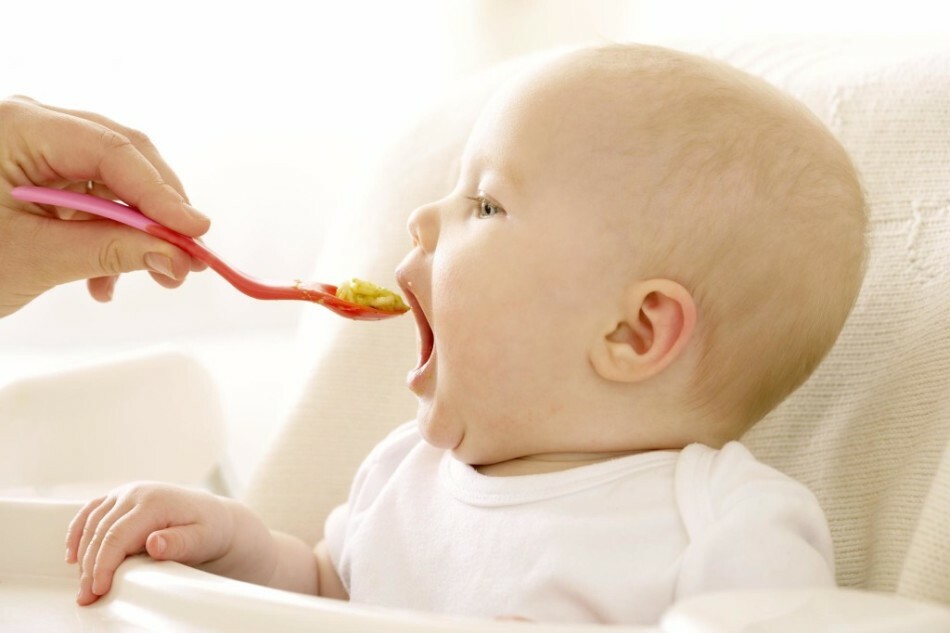 . Feeding crumbs - artificial insulin is injected in the same way as babies, only a littlebefore.
. Feeding crumbs - artificial insulin is injected in the same way as babies, only a littlebefore. - Also offer the baby first dairy-free porridges, then rolls on brewed milk, and only lastly add whole milk
- . From six to seven months, the baby is given an egg yolk, shoving it and adding it either in puree or milk. You need to start with the fourth part of yolk
- During this same period in the life of the child, you can gradually introduce meat into his diet. If you do not buy ready-made food for a baby in a special store, then when preparing the product at home, it is necessary to rub the meat in a blender to a uniform mushy consistency so that there are no lumps, and the child could not choke
- The best meat for the artificial baby will be veal, beef,rabbit or chicken. Beef and veal contain a lot of iron, and this is important for the baby's body.
IMPORTANT: Do not give a small child meat broth, it is heavy for its unformed digestive system
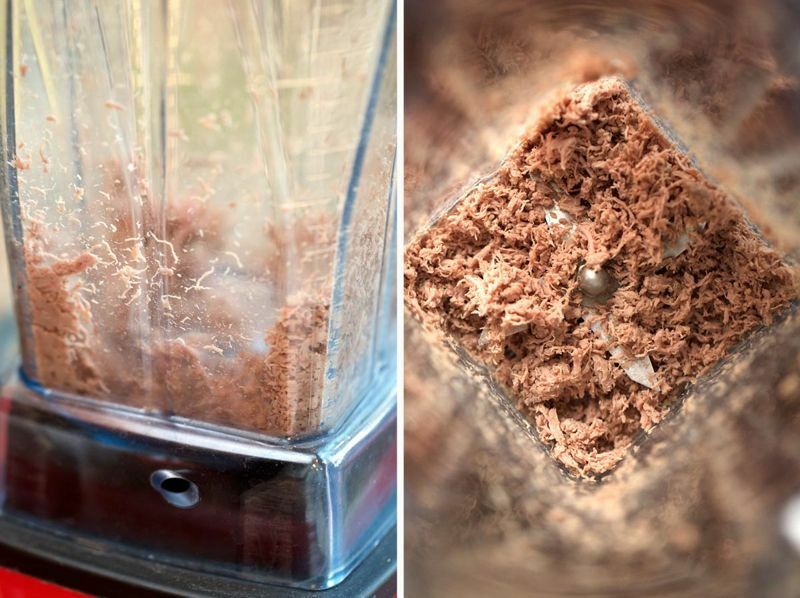 Meat for complementary foods must be ground.
Meat for complementary foods must be ground. - Since the age of six months, children's dairy kitchens offer children lactic acid products, which the pediatrician
- will help to choose. They are important for the children's organism as suppliers of beneficial bacteria for the intestines, as suppliers of protein and calcium. However, it is not necessary to get especially carried away with such products-it is enough to give them once a day, so that the kid's kidneys manage to cope with additional quantity of protein
- . From the age of 8 months, a baby can enter a diet containing a much needed vitamin D for the child's organism.
- . In general, the beginningand the type of complementary feeding for the baby is determined individually, depending on its development. As already mentioned, if the child does not gain weight, then the lure should begin with the porridges
VIDEO: 5 errors in the introduction of complementary foods
Feeding porridges in 6 months
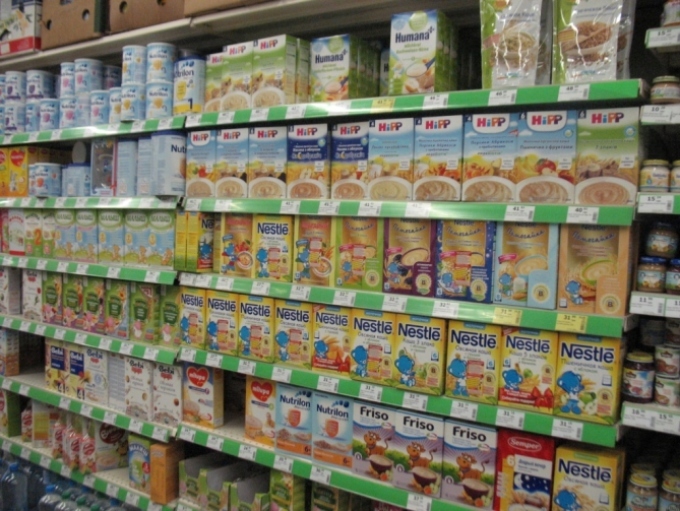 Extra-fat porridges are diverse today.
Extra-fat porridges are diverse today. Rules for the introduction of cereals in the ration of a baby up to a year are as follows:
- The baby is given the baby for the first time in 6-7 months, the artificer is given at 4.5-5 months.
- Porridge from cereals is needed as a source of carbohydrates, vitamins, vegetable proteins
- .cereals without milk
- It is better to start with buckwheat, rice, corn and oatmeal. If the child has constipation, rice should be given with caution
- When it becomes clear that the child's body is accustomed to kashke and normally absorbs it, it is worth trying to add mashed to soft mashed potatoes or fruits
- The first portion of the porridge should be in the volume of one spoon. Each day the dose can be increased from two spoons and more.
- . If the child is on artificial feeding, then after the introduction of lactage in porridge, the volume of the mixture from the bottle should be reduced, so that the total volume of products is about 180-200ml.
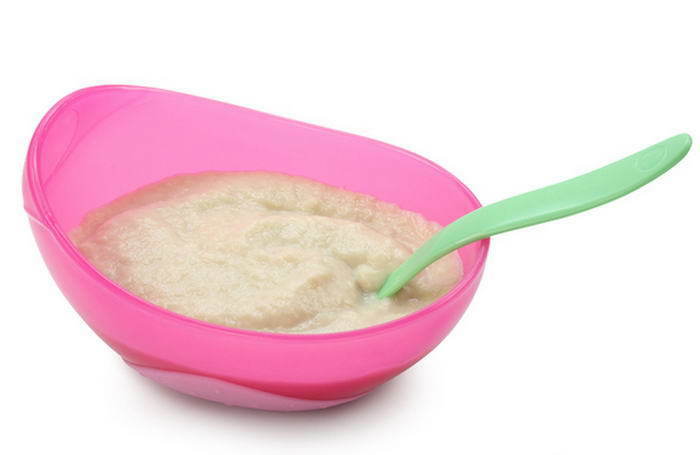 .kachek.
.kachek. Complementary menu at 6 months of breastfeeding: table
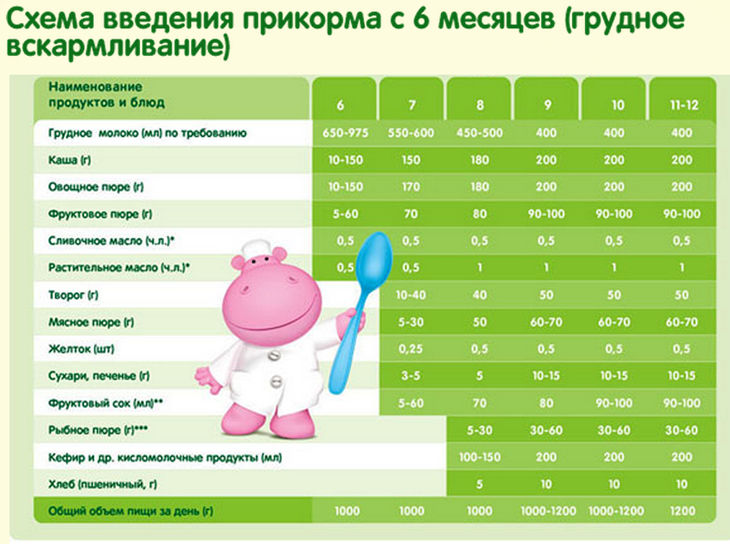 Lunch menu at 6 months with breastfeeding.
Lunch menu at 6 months with breastfeeding. Lunch menu at 6 months with artificial feeding: table
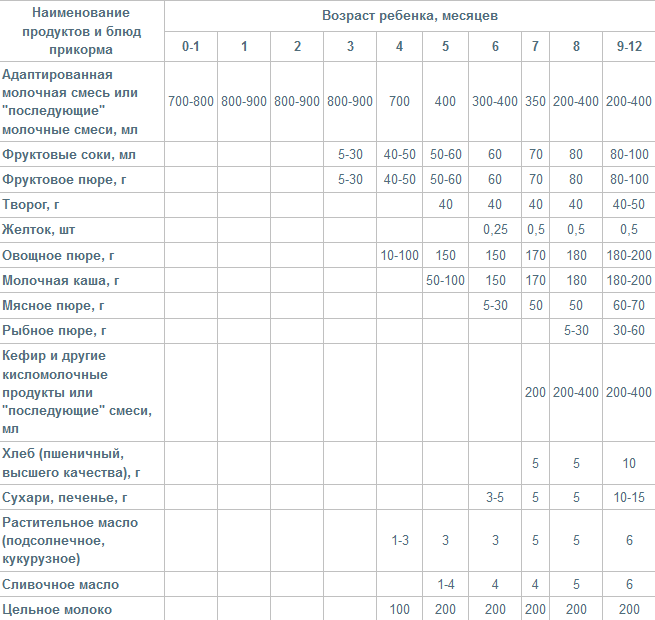 Lunch menu at 6 months with artificial feeding.
Lunch menu at 6 months with artificial feeding. 